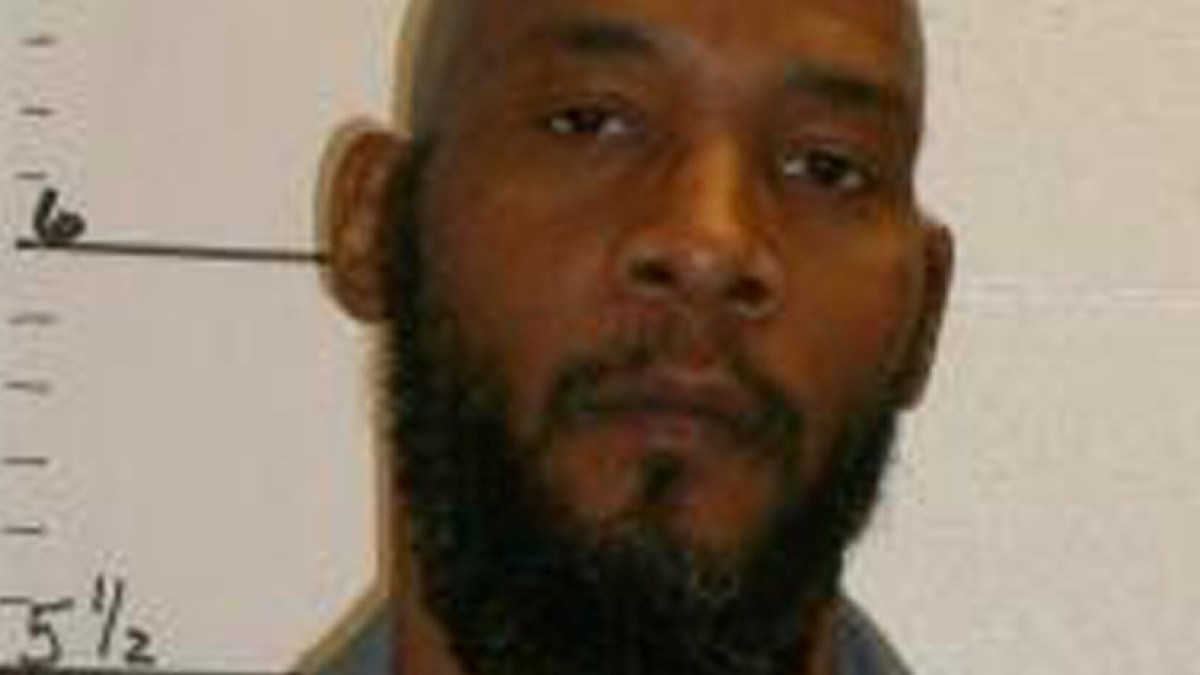
Why was Marcellus Williams executed? What to know about the Missouri case | News
- Politics
- September 25, 2024
- No Comment
- 128
Marcellus Williams, whose murder conviction was called into question by a prosecutor, has been executed by lethal injection.
Williams was put to death shortly after 23:00 GMT at a prison in Bonne Terre in Missouri, despite objections from the victim’s family and prosecutors who sought to have his conviction overturned. This comes as inmates on death row in five US states are set to be executed within a week.
Here is what we know about Williams, the case and the death penalty in the United States.
Who was Marcellus Williams?
Williams, a Black man, was a devout Muslim, an imam for prisoners and a poet, according to his legal team.
He spent 23 years in prison, and during his time he devoted much of his time to studying Islam and writing poetry, The Innocence Project said.
He also acted as the imam for Muslim inmates at Potosi Correctional Center and was referred to as “Khaliifah,” which means leader in Arabic.
Williams’s last statement, on September 21, was, “All praise be to Allah in every situation!” Federal public defenders for Williams said his faith was a large part of his identity and that he regretted not finding it earlier in life. He became religious while he was in prison.
What was Williams accused of?
In 2001, Williams was convicted for the murder of Felicia Gayle, a former newspaper reporter and a social worker, who was found stabbed to death in her home in 1998.
During the trial, prosecutors said that Williams broke into her home on August 11, 1998, noticed the shower running and picked up a large butcher knife. When Gayle came downstairs, she was stabbed 43 times, and her purse and her husband’s laptop were stolen.
Authorities said that during that day, Williams wore a jacket to hide blood on his shirt. His girlfriend questioned why he would wear a jacket on such a hot day and later saw the stolen purse and laptop in his car. Williams sold the laptop a day or two afterwards.
Prosecutors also presented testimony from Henry Cole, who shared a cell with Williams in 1999 while Williams was jailed for an armed robbery of a doughnut shop. Cole claimed that Williams confessed to the murder and provided specific details.
What did Williams’s defence argue?
Lawyers argued that there was no forensic evidence connecting Williams to the crime scene and that the murder weapon had been mishandled, casting doubt on the DNA evidence.
Testing showed that DNA on the knife belonged to members of the prosecutors’ office who handled it without gloves after the original crime lab tests.
According to a report by The Associated Press, Williams’s defence also argued that both the girlfriend and Henry Cole had felony convictions and were seeking a $10,000 reward. They also noted that other evidence such as a bloody shoeprint, and hair found at the crime scene did not match Williams’s.
According to local media reports, Williams did sell a laptop computer that was stolen from Gayle’s home, but the local prosecutor Wesley Bell said there was evidence that he had received the computer from his girlfriend. Both witnesses – his girlfriend and Cole – died in the intervening years.
Over the years, Williams was spared from executions in 2015 and 2017, but this did not result in his conviction being overturned.
Bell also said that a prosecutor had improperly rejected Black potential jurors, resulting in a jury with 11 white members and one Black member.
“Marcellus Williams should be alive today,” Bell said in a statement on Tuesday. “There were multiple points in the timeline when decisions could have been made that would have spared him the death penalty.”
Williams maintained his innocence for decades.
What other mechanisms were used to defend Williams?
Questions about the DNA led Bell to request a hearing challenging Williams’s guilt. The date was set for August 21.
But days before the August 21 hearing, new tests revealed that the DNA found on the knife belonged to members of the prosecutor’s office.
With no DNA evidence pointing to any alternative suspects, the lawyers reached a compromise with the prosecutor’s office: Williams would enter a new no-contest plea to first-degree murder in exchange for a life sentence without parole.
A no-contest plea is not an admission of guilt but is treated as such for the purpose of sentencing.
Judge Bruce Hilton approved the agreement, as did Gayle’s family. However, Republican Attorney General Andrew Bailey appealed, leading the state Supreme Court to block the agreement and order Hilton to conduct an evidentiary hearing.
Prosecutor Keith Larner said that he had excluded a potential Black juror because of how similar they were, saying, “They looked like they were brothers.
“Familial brothers,” he continued. “I don’t mean Black people.”
He also mentioned that the knife had already been tested and that it was not recognised at the time that touch could leave DNA traces on evidence.
What was ruled on September 12?
On September 12, Hilton ruled that the first-degree murder conviction and death sentence would remain in place, stating that Williams’s arguments had all been previously dismissed. The state Supreme Court upheld this decision on Monday.
Governor Michael Parson, a Republican, turned down Williams’s request for clemency.
“We hope this gives finality to a case that has languished for decades, revictimising Ms Gayle’s family over and over again,” Parson said in a statement after the execution. “No juror nor judge has ever found Williams’ innocence claim to be credible.”
He was convicted primarily on the word of two witnesses who testified against him.
The sentence was finalised, and officials moved forward with its execution.
What were Williams’s last moments?
Officials said that Williams’s last meal included chicken wings and Tater Tots.
He had his final visit with Imam Jalahii Kacem from approximately 16:00 to 17:30 GMT.
At about 22:50 GMT, witnesses – including Williams’s son and two of his lawyers – were escorted to the prison’s viewing area, Karen Pojmann, spokesperson for the Missouri Department of Corrections said. No one was present on behalf of the victim’s family.
At 23:00 GMT, state Attorney General Andrew Bailey informed the Department of Corrections that there were no legal barriers to the execution. The lethal injection was administered at 23:01 GMT.
According to a report by The Associated Press, Williams wiggled his feet beneath a white sheet that was pulled up to his neck and shifted his head slightly. After that, his chest rose and fell about six times and he showed no further movement.
Williams was pronounced dead at 23:10 GMT, according to Pojmann.
What’s the current situation of the death penalty in the US?
Williams’s case underscores the grave issue of potentially executing an innocent person.
According to the Death Penalty Information Center, at least 200 individuals have been wrongly convicted and sentenced to death since 1973.
Currently, death row inmates in five states are scheduled to be executed within a week. The first execution took place on Friday in South Carolina, and two inmates were pronounced dead on Tuesday evening, including Williams.
In South Carolina, Freddie Owens died by lethal injection, during the state’s first execution in 13 years. Williams was the third inmate executed in Missouri this year and the 100th since the state reinstated the death penalty in 1989.
According to a report by The Associated Press, if the two remaining executions in Alabama and Oklahoma are carried out this week, it will mark the first time in 20 years that five executions have occurred within a seven-day period.
Currently, 48 executions have been scheduled by 11 states for 2024, and 16 have been carried out, according to the Death Penalty Information Center.

#Marcellus #Williams #executed #Missouri #case #News









